| | Click the pictures to access species specific biosecurity information.
..
Beef
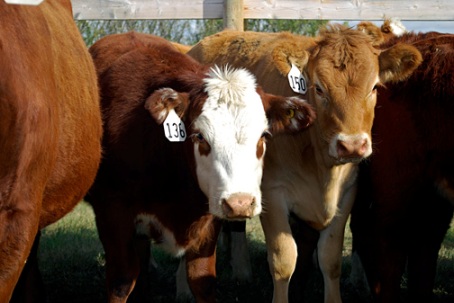
Canadian Cattlemen’s Association (CCA) / Canadian Food Inspection Agency (CFIA)
The CCA, CFIA, and the provincial cattle organizations, in consultation with beef cattle producers, have developed the Canadian Beef Cattle On-Farm Biosecurity Standard. The Standard was designed specifically for the Canadian beef cattle industry and is applicable to operations of all types and sizes. It provides practical and effective on-farm biosecurity practices which are of a low cost for the producer to implement.
Click here to access the CCA Biosecurity information brochure which offers a quick overview of biosecurity practices for beef producers.
Livestock Identification Services Ltd.
Livestock Identification Services (LIS) is an industry owned not-for-profit Company that has been delegated by the Alberta Government to administer the Livestock Identification and Commerce Act (LICA). This Act works in conjunction with the Animal Health Act to deliver a comprehensive and cost effective traceability system in Alberta. LIS has developed an on-farm biosecurity standard for LIS staff to reduce the risk of introducing diseases to a farm, facility or region. Click here to view the LIS Biosecurity Principles and Best Practices Pocket Guide for Alberta Livestock Producers.
Follow this link to visit LIS Biosecurity webpage http://www.lis-alberta.com/biosecurity/index.aspx
Alberta Veterinary Medical Association and Alberta Beef Producers
The ABMVA and AB Beef Producers have developed an informative Biosecurity brochure for the beef industry. The brochure highlights that effective biosecurity programs are based on risk assessments done with the herd veterinarian and limit the impact of disease.
For more information about biosecurity visit ABVMA biosecurity webpage: http://www.abvma.ca/Biosecurity/
Ontario Ministry of Agriculture, Food and Rural Affairs
OMAFRA is responsible for the food, agriculture and rural sectors of the Canadian province of Ontario. OMAFRA has developed the fact sheet Biosecurity: Health Protection and Sanitation Strategies for Cattle and General Guidelines for Other Livestock. This factsheet provides information on how to prevent the introduction of disease into a herd and how to prevent the spread of disease within and between farms.
Cervid
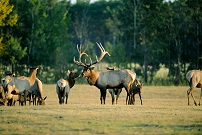
Canadian Food Inspection Agency, Canadian Cervid Alliance
The CFIA and Canadian Cervid Alliance with support from Growing Forward 2 developed the National Cervid Farm-Level Biosecurity Standard that supports a nationally consistent approach to managing infectious diseases in the cervid industry. It contains guidelines and recommendations to assist cervid producers in minimizing infectious disease risks and in developing farm-specific biosecurity plans. It is a resource to create awareness, to educate, to provide a common understanding of biosecurity practices and to serve as a guide for continuous industry improvement.
Dairy
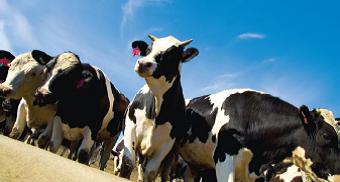
Canadian Food Inspection Agency, Dairy Farmers of Canada
The CFIA in collaboration with the Dairy Farmers of Canada and the support of Growing Forward developed the National Standard: Biosecurity for Canadian Dairy Farms. The National Standard is a set of risk management practices that are intended to address infectious diseases on all types and sizes of dairy production operations in Canada. It lists a set of principles and strategies that should be considered whenever possible by owners, managers, and farm workers when developing a farm-specific biosecurity plan. The National Standard also serves as a guide for
continuous improvement and encourages a higher level of care providing the foundation for achieving consistent industry-wide biosecurity by dairy producers across the country.
The CFIA has developed a fact sheet that outlines general biosecurity principles for the dairy industry.
http://www.inspection.gc.ca/english/anima/biosec/dailaifse.shtml
Alberta Veterinary Medical Association and Alberta Milk
The ABMVA and Alberta Milk have developed a roll-up promotional display for a Johne's Disease reduction initiative as well as a Johne's Disease brochure. These documents emphasize the importance of a Dairy Herd Risk Management Program on controlling JD and other diseases impacting the health of dairy animals.
For more information about biosecurity visit ABVMA biosecurity webpage: http://www.abvma.ca/Biosecurity/
Ontario Ministry of Agriculture, Food and Rural Affairs
The principles covered by the fact sheet Biosecurity: Health Protection and Sanitation Strategies for Cattle and General Guidelines for Other Livestock developed by OMAFRA are also applicable to the dairy industry. This factsheet provides information on how to prevent the introduction of disease into a herd and how to prevent the spread of disease within and between farms.
Goat
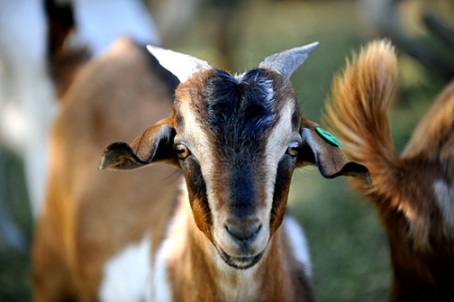
Canadian Food Inspection Agency and Canadian National Goat Federation
The CFIA and CNGF with support from Growing Forward developed the National Farm-Level Biosecurity Standard for the Goat Industry. The Standard identifies areas of the farm or farm practices for producers to consider when developing biosecurity plans for their goat operations. Identifying the possible risks of the introduction of infectious agents to the farm and the practical methods to limiting those risks is key to creating a biosecurity plan. The Standard is a useful tool for goat producers when developing and implementing on-farm biosecurity plans. It contains a set of recommendations that can be adapted to the needs of each farm to raise its current level of biosecurity.
For more information visit the Canadian National Goat Federation webpage: http://cangoats.com/
Alberta Veterinary Medical Association and Alberta Goat Breeders Association
The ABVMA and AGBA have developed the Biosecurity Best Practices Pocket Guide for AB goat breeders. Topics contained in this pocket guide include how to conduct disease risk assessments and implement risk management strategies. It also presents a summary of key practical recommendations for effective biosecurity programs.
For more information about biosecurity visit ABVMA biosecurity webpage: http://www.abvma.ca/Biosecurity/
Honey Bee
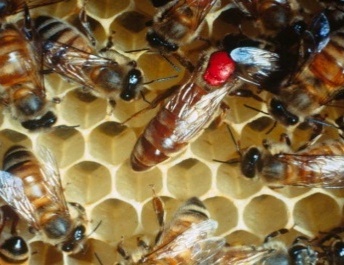
Canadian Food Inspection Agency, Canadian Honey Council and Canadian Association of Professional Apiculturists.
The CFIA, CHC, CAPA in partnership with provincial apiarist and with the support of Growing Forward, developed the National Bee Farm-Level Biosecurity Standard. The National Standard has been developed as a tool for all people and businesses handling and keeping bees, including honey bees, alfalfa leafcutting bees, and bumblebees. For each sector, a producer guide provides detailed information on how to meet target outcomes described in the National Standard.
Horse
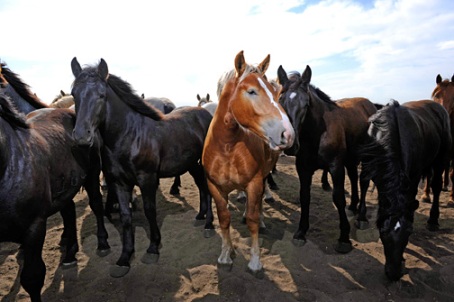
Canadian Food Inspection Agency and Equine Canada
The CFIA and Equine Canada with support from Growing Forward 2 developed the National Farm and Facility Level Biosecurity Standard for the Equine Sector (pdf 2,162 kb). This National biosecurity standard contains guidelines and recommendations to benefit horse owners and custodians in protecting their horses from contagious diseases; The standard identifies “what” biosecurity objectives should be achieved and “why” they are important.
Alberta Veterinary Medical Association and Alberta Equestrian Federation
The ABVMA and AEF have developed the Equine Biosecurity Principles and Best Practices manual. This comprehensive manual covers diverse topics of horse biosecurity including how to conduct disease risk assessment to identify where and which biosecurity measures can be implemented. Biosecurity measures are divided into access management practices, animal health management practices and operational management practices.
For more information about biosecurity visit ABVMA biosecurity webpage: http://www.abvma.ca/Biosecurity/ or Alberta Equestrian Federation: https://www.albertaequestrian.com/Biosecurity
Ontario Ministry of Agriculture, Food and Rural Affairs
OMAFRA is responsible for the food, agriculture and rural sectors of the Canadian province of Ontario. The OMAFRA has developed the information sheet Biosecurity for Horse Owners; this document provides information on major infectious diseases and the means of their spread, as well as recommendations to prevent the spread of infectious diseases using biosecurity principles.
Poultry
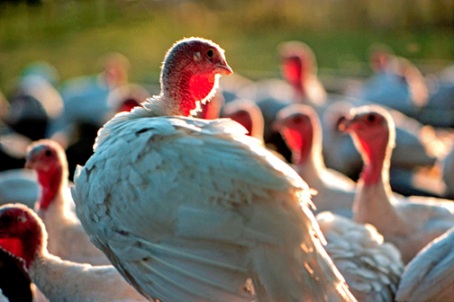
Canadian Food Inspection Agency
The CFIA developed the National Avian On-Farm Biosecurity Standard as a tool for all people and businesses handling and keeping poultry, including large-scale supply-managed producers, backyard flock owners and other domestic bird keepers. The Standard forms the basis of a comprehensive voluntary program designed to provide guidance for owners or managers in all the poultry sectors in Canada.
The CFIA also developed fact sheets that summarize avian diseases, sources of avian diseases and biosecurity principles for avian producers. http://www.inspection.gc.ca/english/anima/biosec/aviafse.shtml.
General information on biosecurity for small flock owners can be accessed at:
http://www.inspection.gc.ca/english/anima/disemala/avflu/bacdoc/floelee.shtml
Alberta Veterinary Medical Association:
The ABVMA and the AB Chicken Producers have developed a Biosecurity brochure and Biosecurity poster for the broiler industry reminding chicken producers that “What’s inside stays in, what’s outside stays out”.
The ABVMA and the AB Hatching Egg Producers have developed a Biosecurity Beyond the Basics Fact Sheet emphasizing how enhanced biosecurity protocols become necessary when a disease threat is identified. Biosecurity signage for the hatching egg industry is also available.
The ABVMA, the North Central Alberta Poultry Association and the Canadian Heritage Breeds have developed the biosecurity brochure: Keeping Small Flocks Healthy. The brochure highlights the importance of completing a disease risk assessment and provides practical practices for a balanced biosecurity program.
For more information about biosecurity visit ABVMA biosecurity webpage: http://www.abvma.ca/Biosecurity/
University of Alberta, Poultry Research Centre
The University of Alberta strives to advance the poultry industry through research and education. Several informative videos that describe the principles of poultry biosecurity can be found on their website. http://www.prc.afns.ualberta.ca/Content/Index.php?page=videos_biosecurity_video
Ontario Ministry of Agriculture, Food & Rural Affairs
OMAFRA’s website provides information for commercial poultry producers on some major poultry infectious diseases, sources of infections as well as some major components of a successful biosecurity program. http://www.omafra.gov.on.ca/english/livestock/poultry/facts/05-077.htm
OMAFRA has also developed a fact sheet with biosecurity recommendations for small flock poultry owners with the goal of preventing the spread of disease using biosecurity principles.
British Columbia Ministry of Agriculture
The BC Ministry of Agriculture produced the BC Poultry Biosecurity Reference Guide as an information resource to assist poultry producers in developing biosecurity plans for their farming operations. The guide includes information on legislative requirements, details about biosecurity practices, a glossary of terms and sources for further information.
The Small Flock Poultry Health Manual produced by the BC Ministry of Agriculture provides a general description of management and health for keeping poultry, especially for small producers and hobby flock owners. The manual covers all elements of poultry production including housing and management, basics of poultry diseases, disease prevention and control, and food safety.
Small poultry flock in Alberta? this webpage offers many resources for urban and rural small flock owners
http://www.agriculture.alberta.ca/smallflock
Sheep
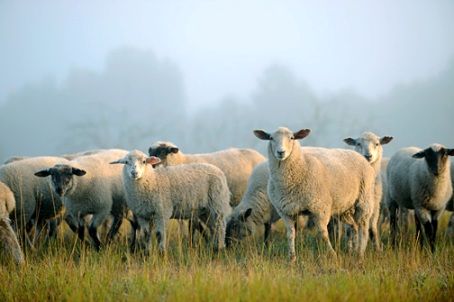
Canadian Food Inspection Agency and Canadian Sheep Federation
The CFIA and CSF with support from Growing Forward developed the National Sheep On-Farm Biosecurity Standard. The Standard provides the framework and scope for biosecurity planning in the sheep sector in Canada by establishing a minimum set of biosecurity standards that can be used by sheep producers in all producing regions. It is intended to assist sheep producers in developing biosecurity plans for their specific farm operations, to serve as a guide for continuous improvement, and to encourage a higher level of care.
Alberta Veterinary Medical Association and Alberta Lamb Producers
The ABVMA and AB Lamb Producers produced the Biosecurity Principles and Best Practices for Alberta Lamb Producers. This booklet was developed specifically for sheep producers and livestock operators in AB to help support their efforts to increase the safety and security of their sheep flocks and their families. The booklet is a valuable resource to educate producers of the importance, principles and practices of disease prevention and control specific to the lambing industry.
For more information about biosecurity visit ABVMA biosecurity webpage: http://www.abvma.ca/Biosecurity/
Swine
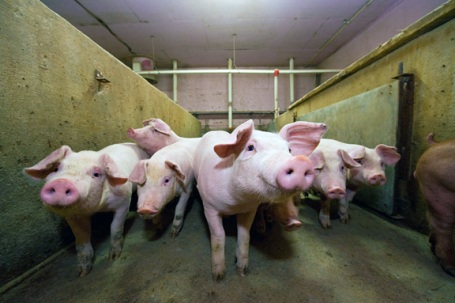
Canadian Swine Health Board
An organization mandated to provide leadership, coordination and support in the management of the health of the Canadian swine herd. The CSHB in partnership with all stakeholders develops and implements long term strategies for control of diseases in the hog industry. To date, Biosecurity and best management practices have been developed for the Canadian hog industry and are available in the National Swine Farm-Level Biosecurity Standard.
For more information on disease management strategies from the CSHB click here.
Canadian Food Inspection Agency
A public service primarily responsible for protecting and promoting Canada’s animal, plant and food industries. The CFIA has developed a fact sheet that provides examples of swine disease sources and of biosecurity principles for swine producers. To visit CFIA’s webpage on Swine biosecurity click on the link below.
http://www.inspection.gc.ca/english/anima/biosec/swiporfse.shtml
Alberta Veterinary Medical Association and Alberta Pork
The ABVMA and AB Pork have developed Biosecurity signage available to pork producers.
Alberta Pork maintains a biosecurity webpage for AB producers.
Ontario Ministry of Agriculture, Food & Rural Affairs
OMAFRA is responsible for the food, agriculture and rural sectors of the Canadian province of Ontario. The OMAFRA has developed a biosecurity checklist that may be used to assess the strength of a particular producer's biosecurity program.
http://www.omafra.gov.on.ca/english/livestock/swine/facts/info_biocheck.htm
Ontario Swine Health Advisory Board
The OSHAB Conducted a project to assess and customize the Production Animal Disease Risk Assessment Program (PADRAP) biosecurity survey tool (used by the American Association of Swine Veterinarians) to meet the needs of the Canadian swine heard. The standardized and customized Canadian PADRAP tool allows Canadian swine farmers to assess their current biosecurity practices, identify potential risks to herd health and determine which areas need improvement to prevent disease outbreaks.
Le Centre de Développement du Porc du Québec
Has published a reader-friendly booklet that artistically portrays important concepts of biosecurity, exploring primarily the multiple routes for disease transmission. To visit the CDPQ’s website follow the link below:
http://www.cdpq.ca/default.aspx
Click here to go back to Alberta's biosecurity webpage
|
|